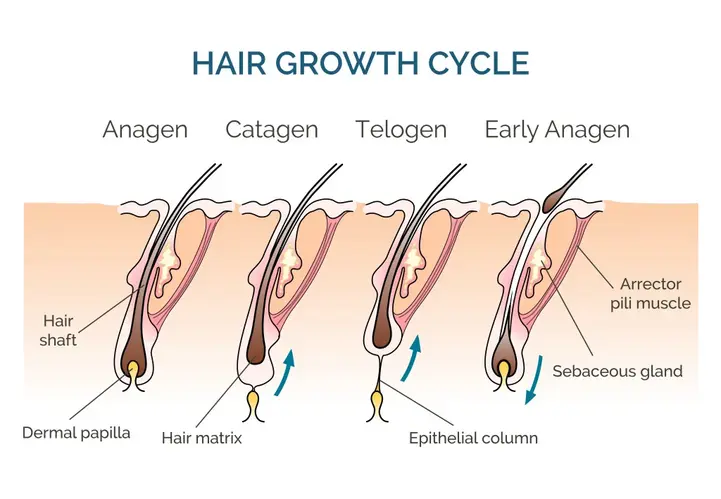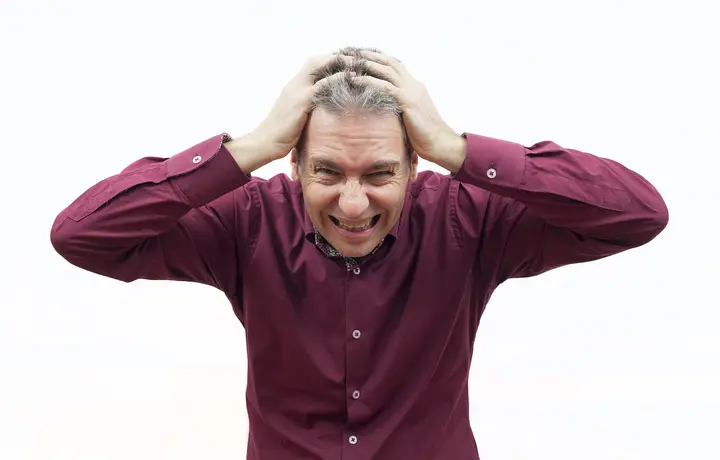Why do men often go bald, while women rarely do?
For many men, waking up and seeing the hairline recede when looking in the mirror is a real struggle. We are talking about male pattern baldness. On the other hand, women seem to have a magical ability to retain hair, and only suffer from scattered hair loss.
Show key points
- Male pattern baldness is primarily a genetic condition influenced by multiple genes, with the AR gene on the X chromosome playing a major role.
- This condition is more common in men because they inherit a single X chromosome from their mother, increasing their likelihood of expressing the gene responsible for baldness.
- Dihydrotestosterone (DHT), a hormone derived from testosterone, causes hair follicle shrinkage in individuals genetically predisposed to baldness.
- ADVERTISEMENT
- Women are less affected due to having two X chromosomes and producing significantly less DHT and testosterone, while estrogen and progesterone offer protective benefits.
- Hair loss naturally increases with age due to hormonal changes, reduced blood flow, cellular aging, and oxidative stress weakening hair follicles.
- Stress and poor lifestyle choices like smoking, alcohol use, and inadequate nutrition can accelerate or worsen hair loss in both men and women.
- Although treatments such as medication and hair transplants exist, they can be costly, and embracing natural aging and inner beauty may be a more sustainable option.
Why is there a difference between those who have hair at the age of sixty and those who do not?
Your genes carry the answer.
Heredity of hair loss

Male pattern baldness is a genetic trait. The condition here is multigenetic, which means it is affected by multiple genes.
Researchers have identified multiple specific genes associated with an increased risk of male pattern baldness. One of these genes is the AR gene, which is on the X chromosome.
Recommend
The "AR gene" is an abbreviation for the androgen receptor gene. This gene makes a protein called the androgen receptor, a protein that plays a crucial role in the development and functioning of male sexual organs and other "masculine" physical traits, such as facial hair or deep voice.
The main function of androgen receptors is to sensitize to the hormones testosterone and dihydrotestosterone (DHT), both commonly referred to as "male hormones."
Many organs and cells including hair follicles contain androgen receptors, and as a result, these organs are sensitive to testosterone. DHT is a derivative of testosterone, and it affects hair as it can cause hair follicles to shrink and thin hair over time, a process called hair follicle reduction and is experienced by individuals with a genetic predisposition to baldness.
A comprehensive study of 12,806 men of European descent revealed that individuals with a certain type of this gene had more than twice the risk of male pattern baldness (MPB) compared to those who did not have it.
n The reason why only men suffer from pattern baldness is the same reason why they are biologically male in the first place.

The reason only men suffer from pattern baldness is the same reason why they are biologically male in the first place.
Men inherit one X chromosome from their mother and one Y chromosome from their father. This gives them a greater chance of receiving the gene associated with baldness from the maternal side.
On the other hand, a woman inherits two X chromosomes, one from each of the parents. If one X chromosome carries the gene associated with baldness, while the other X lacks it, the X chromosome may not show the effect of the baldness gene.
This genetic pattern explains why male pattern baldness is more prevalent in men than in women.
However, it is important to note that not all men who carry the gene associated with baldness will necessarily experience complete hair loss. There are many genes involved, and how they all affect hair growth will together determine how hair is lost.
Interestingly, women also produce testosterone and DHT, so why doesn't this condition affect them?
Besides genetics, women produce significantly less DHT and testosterone than men, and they also have higher amounts of estrogen and progesterone, both of which play a protective role in keeping hair follicles healthy and functioning.
Women may begin to lose their hair after menopause with a decrease in the level of these two hormones.
You lose hair as you get older

Hair loss tends to be a natural part of the aging process and affects both men and women.
Besides hormonal factors and genetics, aging creates fundamental changes in our bodies. Reduced blood flow can lead to a smaller size of hair follicles and the production of thinner hair strands.
Cellular changes, inflammation, and oxidative stress also play a role in weakening hair follicles as we age, leading to hair thinning and gradual hair loss over time.
Stress and lifestyle factors

Finally, consider stress and lifestyle options that can affect hair loss in both men and women.
High levels of stress can lead to a certain type of hair loss, as a large number of hair follicles enter the resting phase prematurely, leading to increased hair loss. This condition is usually temporary, but chronic stress can worsen male pattern baldness.
In addition, some lifestyle choices, such as smoking, excessive alcohol consumption and a poor diet that lacks essential nutrients, can negatively affect hair health. In short, unhealthy lifestyle choices can have a detrimental effect on hair growth for both men and women.

With everything in mind, the difference in hair loss patterns between men and women boils down to genetics, hormones, and age.
Genetic predisposition to male pattern baldness and increased sensitivity of hair follicles to DHT in males contribute to their high rates of baldness. In contrast, genetic complications in women provide additional safeguards against hair loss.
Fortunately, there are several ways to prevent or reduce hair loss. There are many pills on the market that prevent hair loss, and there is always a hair transplant option, which is a permanent option.
These procedures can be expensive, and for most of us, spending all these amounts to preserve our scalp can make no sense.
It may be time to accept that our bodies age and that we have to find beauty within us every time we look in the mirror.








